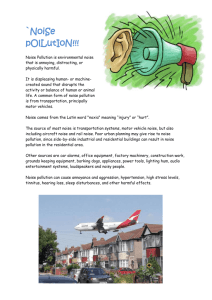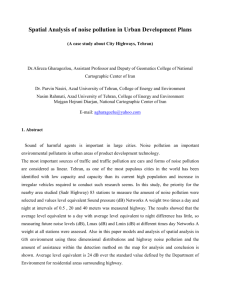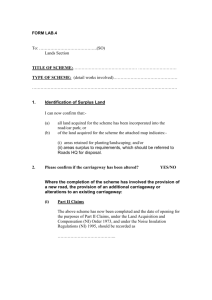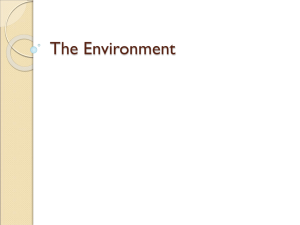Addendum 1
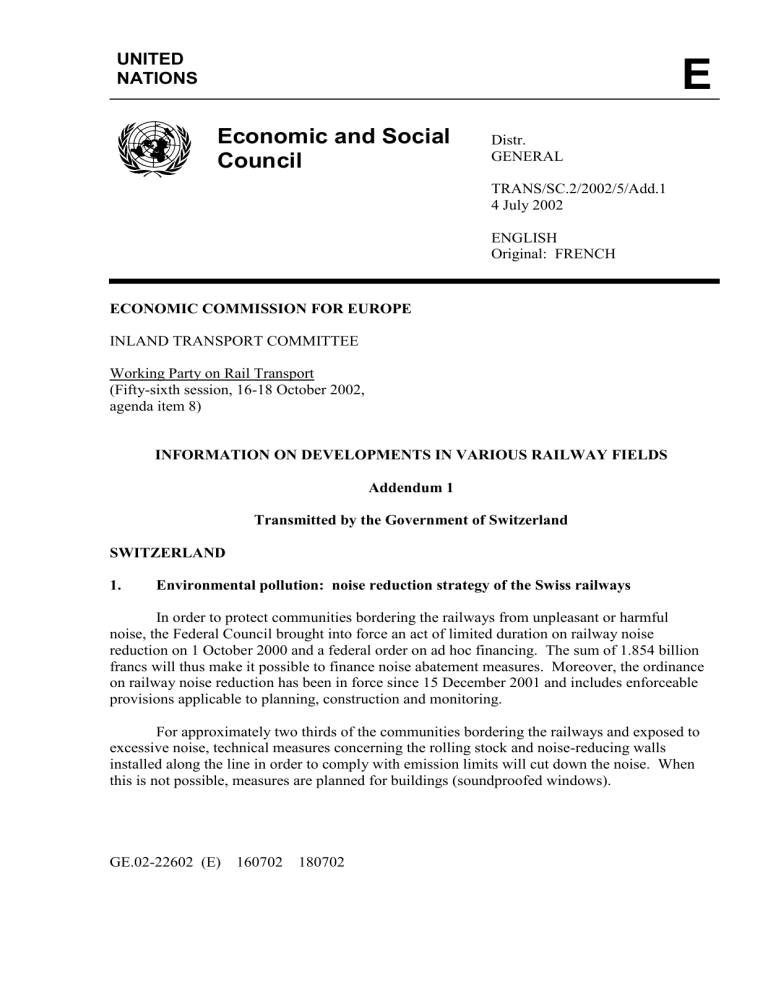
UNITED
NATIONS
E
Economic and Social
Council
Distr.
GENERAL
TRANS/SC.2/2002/5/Add.1
4 July 2002
ENGLISH
Original: FRENCH
ECONOMIC COMMISSION FOR EUROPE
INLAND TRANSPORT COMMITTEE
Working Party on Rail Transport
(Fifty-sixth session, 16-18 October 2002, agenda item 8)
INFORMATION ON DEVELOPMENTS IN VARIOUS RAILWAY FIELDS
Addendum 1
Transmitted by the Government of Switzerland
SWITZERLAND
1. Environmental pollution: noise reduction strategy of the Swiss railways
In order to protect communities bordering the railways from unpleasant or harmful noise, the Federal Council brought into force an act of limited duration on railway noise reduction on 1 October 2000 and a federal order on ad hoc financing. The sum of 1.854 billion francs will thus make it possible to finance noise abatement measures. Moreover, the ordinance on railway noise reduction has been in force since 15 December 2001 and includes enforceable provisions applicable to planning, construction and monitoring.
For approximately two thirds of the communities bordering the railways and exposed to excessive noise, technical measures concerning the rolling stock and noise-reducing walls installed along the line in order to comply with emission limits will cut down the noise. When this is not possible, measures are planned for buildings (soundproofed windows).
GE.02-22602 (E) 160702 180702
TRANS/SC.2/2002/5/Add.1 page 2
The Confederation intends to reduce noise on the basis of the following principles:
Measures taken at source (improvement of in-service rolling stock) are preferable to noise propagation measures (noise-reducing walls);
Passive noise protection (soundproofed windows) should only be provided if the measures envisaged at source or which concern the form of propagation are not sufficient or are out of proportion.
The improvement of rolling stock noise (21,500 wagons, 2,350 coaches) will enable the noise affecting approximately 100,000 persons to be reduced to below emission limits. Where coaches are concerned, the cast iron brake shoes of the old coaches will be replaced by brake shoes in synthetic material and solid wheels with a low internal stress will be fitted as a general rule. Since the running surfaces of wheels will no longer be chafed by the new brake shoe inserts, running noise will be substantially reduced. Vehicles with disc brakes are already less noisy. The improvement of the Swiss wagon stock depends on technical approval for international traffic. Remedying noise pollution in the rolling stock will cost approximately 820 million francs.
The construction of noise reducing walls will improve the quality of life of an additional 83,000 persons. It is planned to equip 270 km of railway lines with these walls, representing an expenditure of 900 million francs, including reimbursement for existing walls of this type.
Installing soundproofed windows for internal insulation will make it possible to reduce sound pollution affecting an additional 82,000 persons to a tolerable level. These measures will cost 120 million francs.
For noise pollution which exceeds the alert limits, the Confederation will take entire financial responsibility for installing soundproofed windows. If the noise is comprised between the emission limits and the (higher) alert limits, the Confederation will take over half the cost of installation, and the other half will be the responsibility of the owners of the buildings. The
Confederation goes further with these regulations than the ordinance in force on anti-noise protection.
The two rail-road transport corridors of the Lötschberg and the Saint Gothard will be improved first, since at night communities bordering these lines are exposed to severe sound pollution due to goods traffic. The other sections to be improved will follow in decreasing order of pollution levels and the number of persons concerned.
The extent of noise pollution and the possible obligation to reduce it will be reviewed by the Federal Office of Transport in more than 1,000 communes. When construction is necessary, an authorization procedure will be organized in each commune. The residents concerned will then be able to raise objections to the proposed measures. Up to spring 2002, a public inquiry had already been held in more than 50 communes. The first projects are being implemented, and others will follow in due course.
TRANS/SC.2/2002/5/Add.1 page 3
The improvement of rolling stock noise pollution should be completed by the end of 2009. The installation of noise-reducing walls and soundproofed windows will be completed by the end of 2015. By the end of 2001, 388 coaches will have been improved. Wagon improvement is scheduled as from 2004.
2. Railway safety
The railways are a safe means of transport. The risk of being involved in a rail accident is 45 times less than in private road traffic. Currently two train safety systems are in service in
Switzerland:
The SIGNUM system which warns the driver at the distant signal when the train is travelling towards a signal on danger or when the speed needs to be substantially reduced. It further triggers emergency braking if the driver does not acknowledge the signal or goes through a stop signal. However, SIGNUM does not enable the train to be stopped before the danger point in all cases;
The ZUB speed control system which supplements SIGNUM in that it stops the train before the danger point depending on the position of the signal.
The aim of the Swiss Government is to improve train safety still further. The mandate of the Federal Office of Transport is to carry out this high priority task:
By filling the gaps;
By defusing the most dangerous points and sections of the Swiss railway network in the short term on a risk analysis basis;
By introducing the ETCS (European Train Control System) automatic train stopping system, which ensures interoperability, as a medium and long-term standard. This system will replace SIGNUM and ZUB. It is based on a building-block design and may be used both on conventional lines and on high-speed sections (with signals in the driver’s cab).
On 27 January 2000, the Federal Office of Transport drew up a transfer policy to identify the phases and the financing of the change-over from the SIGNUM and ZUB systems to the
ETCS. Provision has been made for the following measures:
(a) Short-term phase (by the end of 2002 at latest):
Transport companies will be required to give priority to track sections at risk. When operating measures do not permit or when there is not yet any justification for installing the elements of the ETCS, the ZUB system will still be installed;
TRANS/SC.2/2002/5/Add.1 page 4
Vehicles running regularly on sections protected by the ZUB system and vehicles carrying dangerous goods must be equipped with this system. This rule also applies to foreign vehicles operating in Switzerland. All vehicles equipped or to be equipped with the ZUB must also carry a “Rucksack” system (except for vehicles in which the driver’s cab is directly equipped with signals). This additional device enables the vehicle’s ZUB appliance also to receive and read ETCS signals. It ensures that communication problems do not arise between a section equipped with the ETCS and a vehicle fitted with the ZUB system when the rail network is being progressively upgraded for the ETCS.
(b) In the long term (from 2001 to 2010 at latest):
The tracks will no longer be protected by ETCS components alone. Priority will be given to the north-south transit routes via the Saint Gothard and the
Lötschberg-Simplon and to the Bern RER network since it is closely linked to the Lötschberg-Simplon route;
For new vehicles, provision should already be made at the manufacturing stage for the technical conditions for installing ETCS equipment.
As regards the question of the introduction of new transport technologies, we have nothing to add.
- - - - -
